The masked gunmen pulled up to Wanda’s Bar at 3.49pm on May 19th and began firing the moment they left their vehicles. Two people, including Wanda herself, died on the patio.
Inside, the gunmen worked in silence: two in front, shooting unarmed patrons at the bar and in the main room, while a third followed behind with a gun in each hand, firing a single shot into the head of anyone still moving. When the massacre ended, 11 people lay dead, slumped over the bar, draped across chairs or huddled on the floor.
Only two people survived, one by hiding under a friend's lifeless body, case files show. Once again, masked gunmen had struck in the Brazilian city of Belém, as they have for nearly a decade, stalking the streets in open defiance of the law – robbing, extorting and killing without compunction. Yet they did not belong to one of the many gangs that traffic drugs or guns in Brazil, leaving a trail of corpses. They were cops.
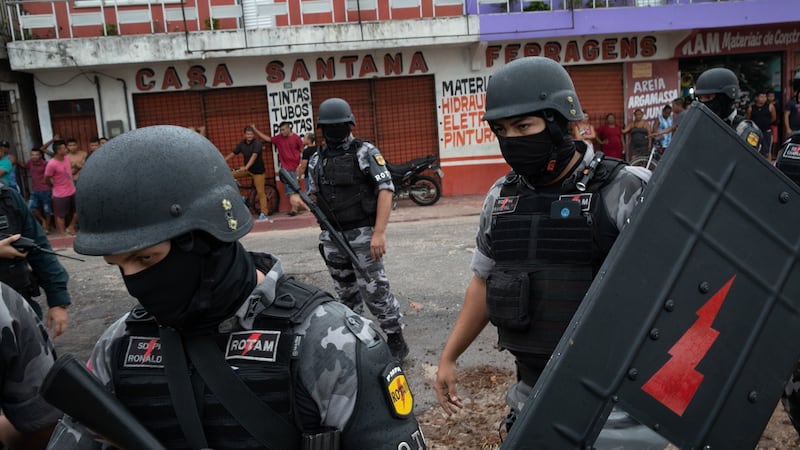
The killings drew national attention to police militias that have long plagued Belém, a dilapidated port city on the Amazon River. Part death squad, part criminal enterprise, their ranks are filled with retired and off-duty police officers who kill at will, often with total impunity.
In fact, the slaughter at Wanda’s Bar was not unique because off-duty police officers gunned down civilians without cause. Such killings are routine. What made this case stand out beyond its brutality was the government’s response: It decided to prosecute.
Of the seven people charged with the crime, four were off-duty police officers – including the three suspected gunmen. “We’ve discovered a cancer inside the police,” said Armando Brasil, one of the prosecutors. “Now we are seeing just how far it has spread.”
The militias operate in the shadows of a severe crackdown on crime by the Brazilian government, which has openly declared war on the gangs, thieves and drug dealers afflicting the nation. Killings by police have soared in recent years, as a force long known for its deadliness has managed to outdo itself.
The number of people officially killed by police reached a five-year high last year, rising to 6,220 – an average of 17 people each day, according to the Brazilian Public Security Forum, which compiles government data. Police killings may exceed that this year, coaxed on by President Jair Bolsonaro and his contention that criminals should "die like cockroaches".
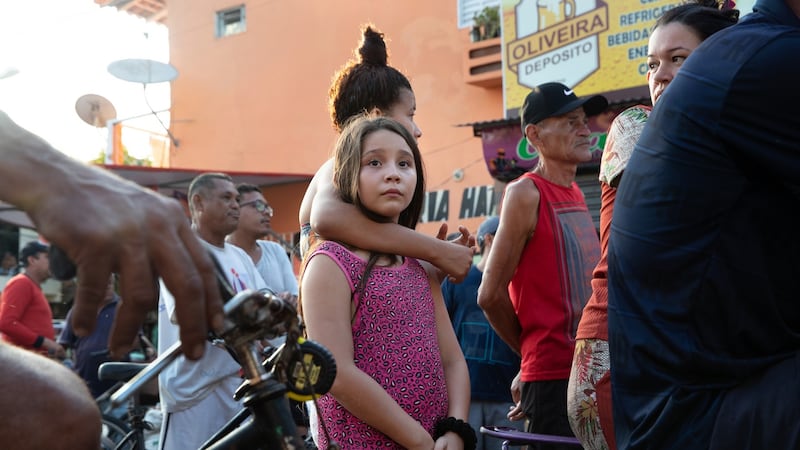
The deaths have stirred a familiar debate in Brazil. Human rights advocates denounce the heavy-handed approach as both inhumane and ineffective, while proponents said it is the only way to confront a crime wave that has put the entire nation at risk.
Due process
But even police officers acknowledge that the official statistics are only part of the picture. There is a parallel form of police violence, masked from the public and carried out by illegal militias that draw their ranks from officers with little patience or respect for due process, according to interviews with militia members here in Belém.
By their own admission, groups of off-duty and retired officers regularly commit extrajudicial killings, targeting people they consider criminals, robbers and police killers without so much as an arrest warrant.
“We’re going after criminals who hurt innocent people,” said one militia commander who, like others, asked that his name be withheld because he confessed to extrajudicial killings.
In their telling, militia members are delivering a public service, eliminating threats to society who, they fear, may never get convicted or will simply participate in sprawling criminal networks from prison, as often happens in Brazil.
“I’ve killed more than 80 criminals in my time as a police officer,” said another militia leader. “I’m a hero to my people. They love me.”
Latin America is in the midst of a homicide crisis. More killings take place in the region’s five most violent nations than in every major war zone combined, according to the Igaraé Institute, which tracks violence worldwide.
The usual suspects are often to blame: the cartels and gangs; the surfeit of guns, frequently from the United States; the paralysed legal systems. But violence by the state is another important factor in the bloodshed – driven by an abiding belief that nations must fight force with ruthless force to find peace.
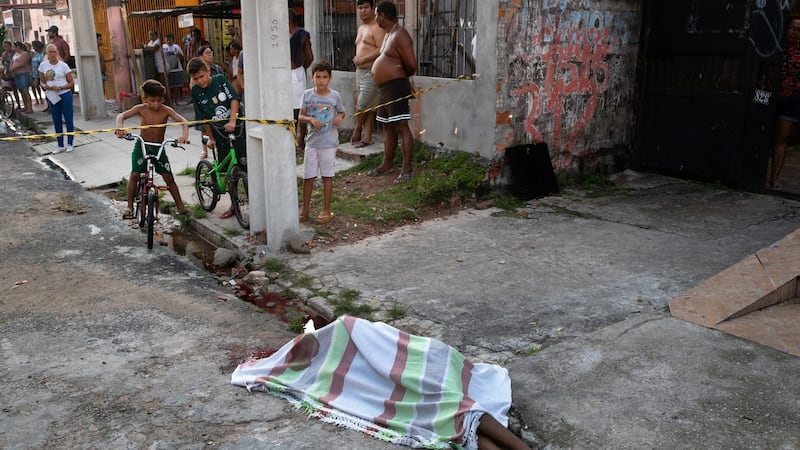
In Brazil, El Salvador, Mexico and other countries, the use of deadly force by authorities – and the acceptance, or even applause, by the population for that approach – is so widespread that even the public statistics point to an abundance of extrajudicial killings, researchers said.
In many dangerous places, even when gangs and organised crime are very well armed, it is not surprising that criminals die in greater numbers than the police or military they are fighting, researchers said. But when that ratio is highly skewed – and 10 or more suspected criminals die for every police officer or soldier killed – researchers often view that as a clear indication of excessive force by authorities.
In El Salvador, where the government is battling gangs, the ratio is staggering – almost 102-to-1 – according to the Lethal Force Monitor, a research group that tracks the rates across several Latin American countries. In other words, for every policeman killed in El Salvador, nearly 102 suspected criminals die – 10 times the level researchers consider suspiciously high.
In Brazil, the number is also striking: 57 suspected criminals die for every police officer killed, the analysts found.
Public acceptance
"We believe that homicides are not a problem; they're a solution," said Bruno Paes Manso, a researcher at the University of São Paulo, describing the public acceptance of killings by police. "There is a strong belief that violence promotes order," he added. "And the militias thrive off this feeling."
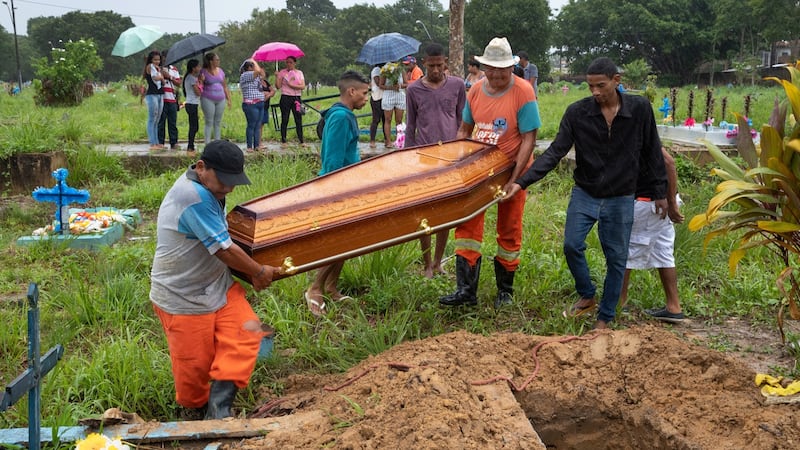
But extrajudicial killings are often much more than an extreme step by overzealous officers in cities like Belém and Rio de Janeiro, and some militia members are candid about their criminal motivations. To line their pockets, some militia members said they bill businesses for security services, taking in hefty sums with mafia-style promises to keep the peace, or they charge local residents for the right to engage in basic commerce, like selling cooking gas or pizzas.
The militias also extort criminals and kill those who don’t pay, operations that hardly differ from the ones they are supposedly confronting. “It became explicit for me,” said a third militia member. “It became organised crime.”
Today in Belém, there are hundreds of militia members operating in more than a dozen different factions, often with help from on-duty police officers, according to officials and militia members themselves. And until recently, officials said, the government rarely prosecuted or investigated them aggressively.
The government of Pará State, where Belém is the capital, said most police officers “do not deviate from their duties” but acknowledges that others do. It said it has arrested about 50 officers this year in operations “to dismantle criminal organisations involving public security agents”.
The prosecutor investigating the massacre at Wanda’s Bar, Brasil, has linked the militias to at least 100 murders in the state in the last three years, but he thinks the actual number is much higher. “They’ve killed way more than that,” said Brasil, who has bodyguards because he is going after militias. “It’s well into the hundreds.”
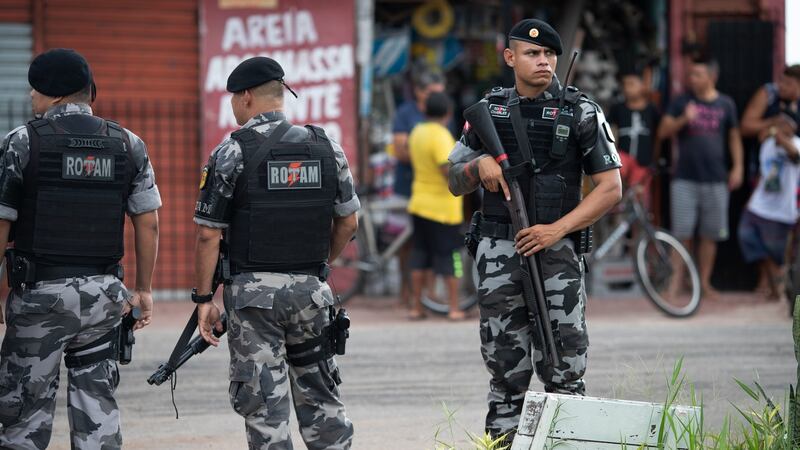
‘An instrument of justice’
He took his first life in 2010, a few years out of the police academy, after a gang called the Red Command killed his colleague. He and other officers shed their uniforms, put on masks and killed a dozen people they deemed responsible or connected in some way, he said.
After that, every time an officer was killed, he said, he and his fellow officers killed at least 10 suspected gang members in response. If violence was the language of the streets, their message would be the loudest.
Residents took notice, he said, and in 2012 a father in his neighbourhood asked for help. A man had raped his daughter and was still walking free. He asked if the officer would kill the man to end his family’s nightmare. When it was done and the suspect was dead, the officer said, the father wept with gratitude and offered money. He refused at first, then accepted it.
“It was the first time I felt like a hero,” said the officer. “I felt like an instrument of justice.”
From there, it was a short jump to becoming a contract killer, the officer said. Each step away from the law grew easier. Soon, the self-declared principles that marked the start of his militia activity were gone.
By 2014, the officer said, he was robbing drug dealers, kidnapping and torturing them when they resisted. His hatred of criminals justified just about anything, even killing innocent civilians accidentally. He said he came to embody the thing he hated most.
By that time, he said, militias were operating all over Belém. Some were strictly about killing known criminals. Others were about making money. Then in 2014, one of the most powerful militia members in Belém, António Figueiredo, was gunned down in the street. Militias took his death personally, three members said, and decided to respond.
On the night of November 4th, 2014, they retaliated, killing at least 10 people. But the revenge was reckless, sweeping up innocents as masked officers unleashed their rage.
The officer said he joined a team on motorcycles that went to the Terra Firme neighbourhood, an area of mud streets and open sewage canals. He said he watched as a fellow officer dismounted, raised his weapon and fired at a teenager in a baseball cap.
The teenager, Eduardo Chaves (16) was the first person gunned down in the massacre that night. At the time, his family said, he was leaving church with his grandparents and girlfriend. It was shortly after 9pm.

The masked officer shot Eduardo five times, killing him, while the others watched. “He was a kid,” the officer said. “I knew he was innocent, and I knew things were getting out of control. But I was so full of anger, I didn’t say anything.
“By that point, I was already hard core,” he said. “I didn’t feel anything.”
The boy's relatives said they ran to the scene and found his body in the mud. His grandmother, Maria Auxiliadora Neves, said she wept as she collected his silver necklace, his mobile phone and the few dollars he had saved to buy his girlfriend a pair of sandals.
In the aftermath, Neves began to speak out about his murder, a risk even police warned her against. She became an activist, calling attention to police shootings across Belém. And then, it happened to her family again.
On New Year's Day 2016, Danilo de Campos Galucio, another of her grandsons, was shot, this time by men in an unmarked car, she said. Investigators call that a telltale sign of a militia shooting. The bullet passed through several organs and left him debilitated at 15.
He spent the next four years in and out of the hospital undergoing surgeries. Bedridden and depressed, he tried to kill himself twice. This September, he passed away at 19, having succumbed to medical complications related to the shooting.
“I never paid attention to this before because it never affected me,” his grandmother said, referring to the killings by militias, which she once assumed were justified. “I don’t want revenge. I want justice.”
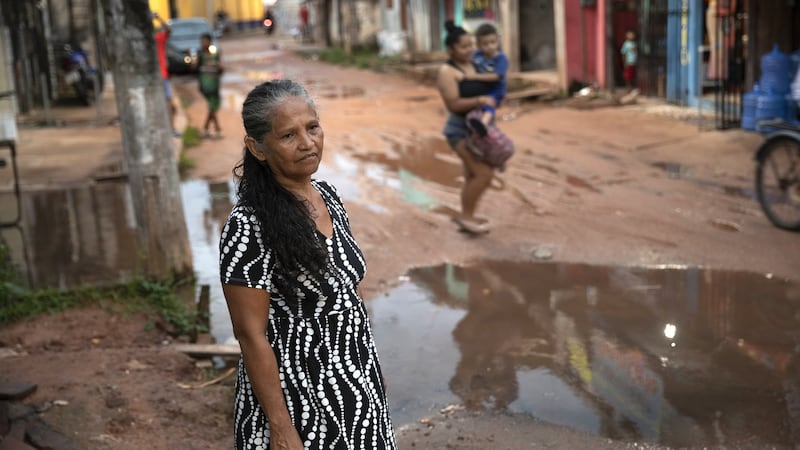
One day in Belém
Officially, police here in Pará State killed 626 people last year – a dozen each week. That's more than 150 times the number of deadly police shootings in all of New York City last year, even though they are roughly the same size. In Belém, the state capital, people killed by police are disproportionately poor people of colour, as they are elsewhere in Brazil.
Nationwide, researchers said, 75 per cent of people shot and killed by police are black. Those factors – the frequency of official police shootings and the marginalised status of the people shot – add to an atmosphere in which death by police seems common, almost inevitable, experts said, laying the groundwork for militias to operate with relative ease.
Over the course of a week, the New York Times tracked seven police shootings in Belém, with nine casualties. This is a snapshot of just one day.
On November 16th, three young men tried to rob a clothing store. But the building belonged to a police officer, a member of the elite ROTAM force, known for its military culture and hyperviolence. The officer, who was home at the time, saw the men enter the store on his security cameras and took them on himself, according to police. As they left the store, he opened fire, shooting two of the men – one in the hand and the other in the head.
The officer stood outside, shirtless, clutching a revolver with a streak of blood smeared on his abdomen as the young man he shot in the head was rushed to the hospital. He survived.
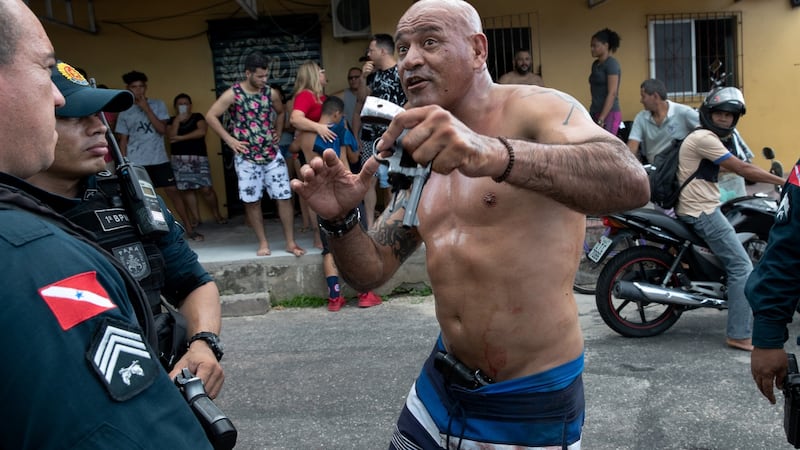
Less than an hour later, an image of the young man’s face appeared on a WhatsApp group shared by militiamen, police officers and sympathisers. In case he evaded justice somehow, they would all know who he was, according to a person included in the group.
That evening, two men stole an SUV and exchanged gunfire with police as they tried to escape. The officers fired three shots into the vehicle. When it stopped, one of the men was taken into custody, witnesses said, adding that he appeared injured but could walk.
An hour later, when he arrived at the hospital, he was dead, with a gunshot wound to the heart, a photo of the body showed. “I don’t know whether they executed him, and I don’t want to know,” his sister said on condition of anonymity, fearful of reprisals from police. “The police here do what they want.”
Later that night, Ramon Silva Oliveira (18) was also killed. He and a friend were coming home from a party, sharing a motorcycle, when police tried to stop them, the family said.
Ramon, they said, was young, black and had a large tattoo, which officers here openly admit arouses suspicion. But he was no gang member, his family said. He had applied to join the military and, in the meantime, was looking for work. He played soccer well. Medals hung from the walls of his room like ornaments.
But that night, his friend, who was driving the motorcycle, decided to keep going. Police fired at the two young men, striking Ramon and forcing the motorcycle to fall over. He died almost immediately.
"I don't know whether the gunshot wound killed him or the fall," said his mother, Marlene Silva de Oliveira, folded in grief. "I didn't have the heart to go and look at his body."
The family held a wake for him the following evening, next to a plot of grass where children played soccer.
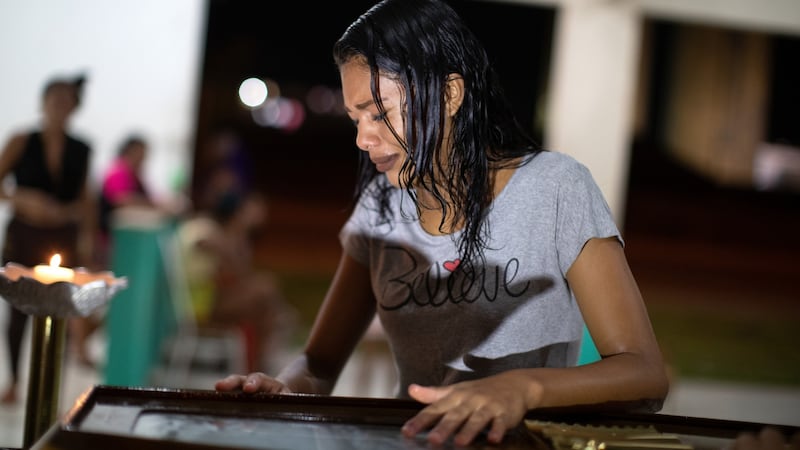
‘Allow us to kill anyone’
The arrests began days after the massacre at Wanda’s Bar. Using surveillance footage from street cameras, investigators found the gunmen’s car at a local repair shop. The owner was trying to get some work done to the car to disguise it. Soon enough, authorities arrested four police officers – two hailed from the elite ROTAM force – and three others suspected in the crime.
Tying the murders to police was relatively straightforward. Forensic analysts found numerous .40-calibre shells at the scene, a bullet available only to military police, a prosecutor said. But a judge in one of the cases thinks the evidence is relatively weak, partly because prosecutors have failed to uncover a motive.
In the meantime, the bar is closed, a mausoleum to the events of May 19th, and residents remain terrified. Some of the accused lived nearby – and their friends still do. The fear is so palpable that not a single family member of the deceased agreed to be interviewed. Some have moved, others changed phones, and those still around refused to answer their doors or respond to messages.
But a close family friend of the bar's owner, Maria Ivanilza Pinheiro Monteiro – known widely as Wanda – contended that everyone in the bar was innocent. They were all friends, partying, and the bar itself was a haunt for lots of militia guys, he said on the condition of anonymity for fear for his life.
That’s why the motive is so elusive, he said. The bar had been around for 15 years. They all knew the militias or were even friends with them. Some of the people killed in the attack actually supported what the militias did, he said, thinking it was the only way to clean up the community.
In fact, the friend still felt that way. He believed that rogue cops were the best way to rid Belém of crime. Even with many of his friends now dead, he still clung to the belief that the militias were a “necessary evil”.
“They make life easier for the good people,” he said. “Overall, I still think they are a force for good.”
The militiamen interviewed for this article all felt the killings at Wanda’s Bar were inexcusable, but they defended militias in general. To them, violence was the only solution, and the only question was how to wield it.
“There’s a way to fix this,” said one of the militia leaders. “The governor should call the good cops and let us go and allow us to kill anyone – only the bad people, the criminals, those who prey on the weak.”
“That will finish the violence once and for all,” he said. – New York Times










